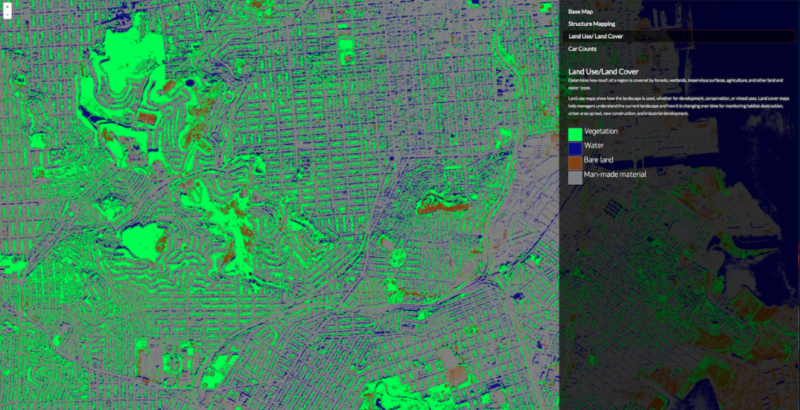Latest News

Computer vision algorithms applied to high resolution imagery. Photo: DigitalGlobe.
DigitalGlobe has announced the SpaceNet Challenge Round 2 results and its plans for the next challenge as well. A collaboration between DigitalGlobe, CosmiQ Works, and NVIDIA, SpaceNet leverages an online repository of publicly accessible satellite imagery, co-registered data layers for training algorithms, and prize challenges to accelerate innovation in machine learning.
The SpaceNet Challenge Round 2 invited participants to improve automated mapping algorithms for building footprint feature extraction from overhead imagery. Building on the success of the first competition, SpaceNet Round 2 incorporated several enhancements, including the release of higher resolution (30 cm) imagery from WorldView 3, improved building footprint training data from four new geographically diverse areas and an extended competition length to provide more time for algorithm development.
According to DigitalGlobe, the winning algorithms achieved performance with potential for automated mapping tasks. Such algorithms can help keep maps up-to-date at scale and serve end-users when current information is needed to direct resources, such as first responders during natural disasters. As in the first challenge, the winning algorithms are available to the open source community through the SpaceNet GitHub repository and users of DigitalGlobe’s geospatial big data platform, GBDX.
“The results from Round 2 show developers are harnessing machine learning and high-resolution training data to achieve outcomes that indicate automation could be used in the near future to support broader geospatial analytics,” said Tony Frazier, senior vice president and general manager of DigitalGlobe Radiant.
The third SpaceNet Challenge will shift focus from automated building footprint extraction to road network extraction and optimized vehicle routing. This challenge will use machine learning to gain insights into transportation networks and navigation. The fourth competition will focus on processing off-nadir imagery produced by high-revisit constellations, like DigitalGlobe’s next-generation WorldView Legion constellation, in rapid timelines and at global scale. The goal of this challenge will be to create algorithms that automatically detect objects from more diverse angles than current nadir imagery. DigitalGlobe said more information on these upcoming challenges will be available as they approach starting in fall 2017.
Get the latest Via Satellite news!
Subscribe Now